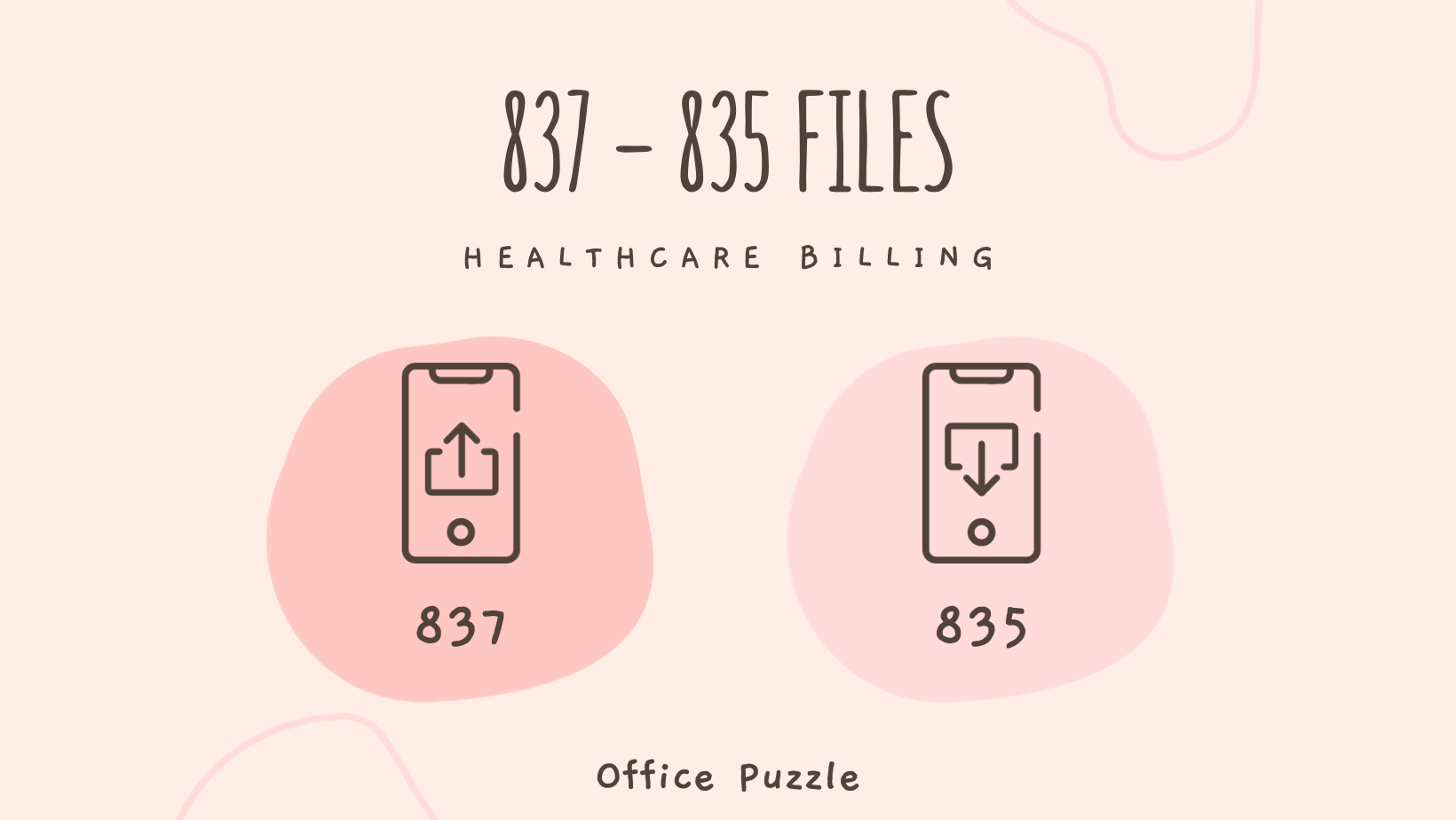The healthcare industry relies heavily on accurate and efficient billing processes to ensure the smooth flow of financial transactions between providers and payers. Two essential components of this process are the 835 and 837 files. These files play a crucial role in healthcare claims and remittance. In this article, we will explore what 835 and 837 files are, how they work, and their significance in the healthcare billing process.
What is an 837 File?
An 837 file is an electronic claim submission document used by healthcare providers to submit claims for reimbursement to payers. It contains comprehensive information about the services provided to patients, along with associated diagnosis and procedure codes. The 837 file is the format in which providers send billing information to payers electronically.
Key components of an 837 file include:
- Patient Information: Demographic details of the patient, such as name, date of birth, and insurance information.
- Provider Information: Information about the healthcare provider, including their NPI and contact details.
- Service Details: Descriptions of the services rendered, including CPT (Current Procedural Terminology) codes and ICD-10 (International Classification of Diseases, 10th Edition) diagnosis codes.
- Payer Information: Details about the insurance payer responsible for processing the claim.
- Claim Totals: Summaries of the charges, payments, and adjustments related to the claim.
Once the healthcare provider submits the 837 file to the payer, the payer processes the claim, which may result in the creation of an 835 file that provides information on the payment and any adjustments made.
What is an 835 File?
An 835 file, often referred to as an Electronic Remittance Advice (ERA), is an electronic document that provides detailed information about the payments and adjustments made by a healthcare payer (such as an insurance company or Medicare) to a healthcare provider. Essentially, it serves as a remittance advice that explains how a claim was processed and paid. Key information contained in an 835 file includes:
- Payment Details: This section includes the payment amount, payment method (e.g., electronic funds transfer), and payment date.
- Claim Information: It provides data related to the specific claim being paid, such as the claim number, patient information, and service details.
- Adjustments and Denials: Any adjustments or denials made to the claim are documented in this section. It explains why certain services were not covered or were partially paid.
- Provider Information: Details about the healthcare provider receiving the payment, including their name, National Provider Identifier (NPI), and address.
- Payer Information: Information about the healthcare payer responsible for processing the claim, including their name, payer ID, and contact information.
The 835 file is crucial for healthcare providers to reconcile their accounts receivable, understand the payment rationale, and address any discrepancies in payments.
The Relationship Between 835 and 837 Files
The 835 and 837 files are interconnected in the healthcare billing process. Here’s how they work together:
- Claim Submission: Healthcare providers use the 837 file to submit claims electronically to payers.
- Claim Processing: Payers receive the 837 file, process the claim, and determine the appropriate reimbursement.
- 835 Generation: If the claim is approved, the payer generates an 835 file, which is sent back to the provider. This 835 file explains how the claim was processed and the payment details.
- Reconciliation: Healthcare providers use the information in the 835 file to reconcile their accounts and ensure they received the correct payment for services rendered.
- Resolution: If there are discrepancies or denials, providers can use the information in the 835 file to address these issues with the payer.
Office Puzzle ensures that agencies comply with HIPAA requirements while optimizing their billing management. One of the features of our platform specializes in the creation of 837 files and the ability to upload 835 files to the platform in the raw. The system identifies claims and batch issues that can hinder payment accuracy, as well as prevents specific denial issues.


